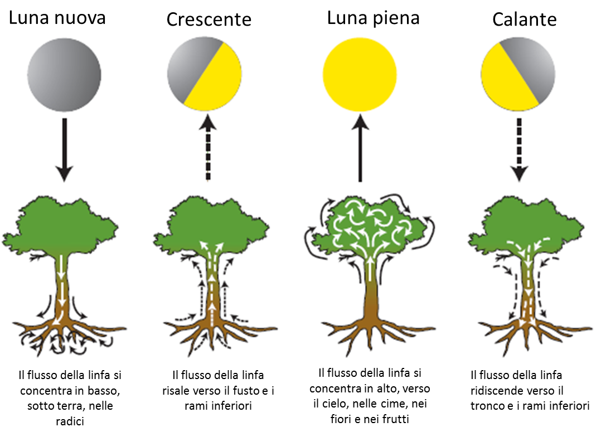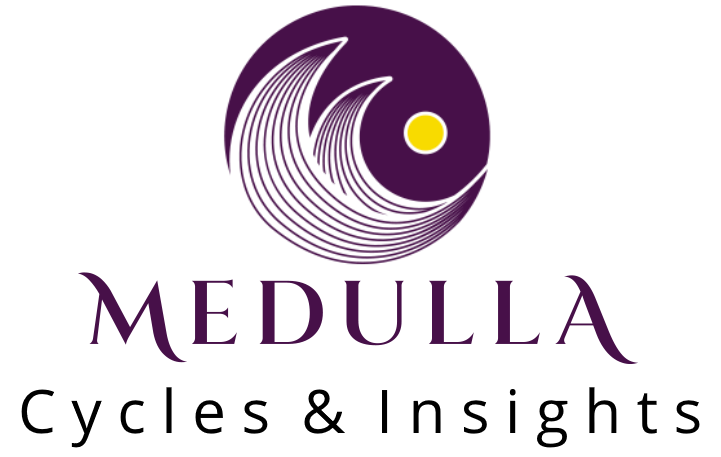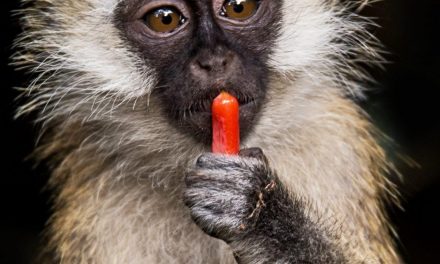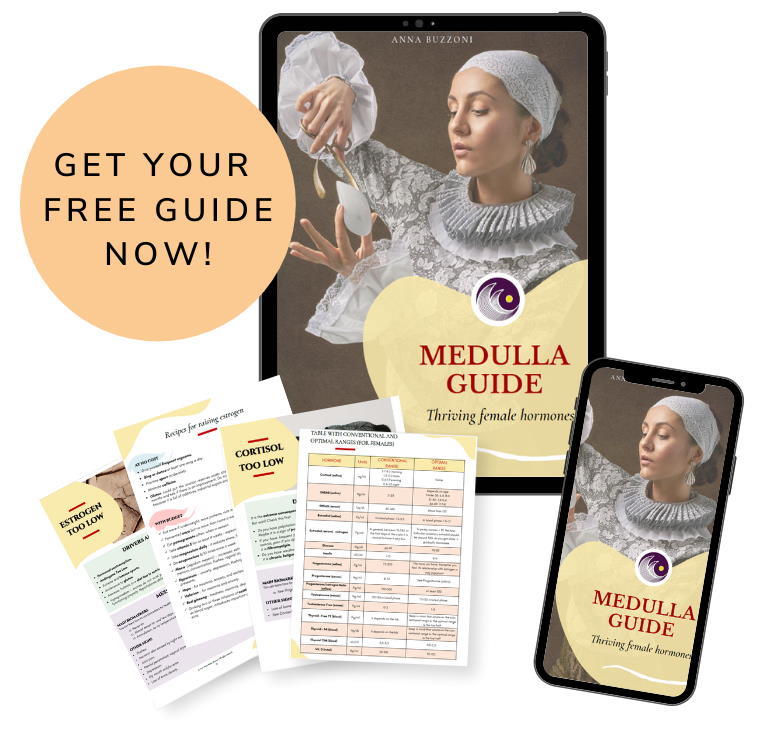The moon, the night sun, has always exerted a great attraction on the earth’s crust, its fluids and, of course, the human soul. Today I want to tell you a little about this extraordinary satellite, starting with its influence on biology and human culture. It will be a journey of science and poetry.
To begin with, I would like us all to take a few breaths.
Close your eyes if you can, and breathe freely, without straining, trying to be present in the sensations of the body. Return to the body. Enter the body through the breath.
And now open your eyes. The breath cycle and the lunar cycle share the same Cyclic Matrix or Cyclical Blueprint™, so what you have just done is basically the same as what the moon does. We’ll get back to it soon!
The lunar cycle
The lunar cycle has four main phases, two dynamic and two pivots:
- New moon, black
- Waxing
- Full moon
- Waning
Perhaps not everyone knows that the Moon exerts a gravitational pull 2.2 times greater than that of the Sun. Its rays (which are solar rays reflected on the moon, of course) penetrate deeper into the ground than the Sun’s.
This is very important, as the moon presides over the regenerative functions of plants and their roots.
The Moon, the sap cycle of plants and the Cyclic Bleuprint™ mirrored in the breath
Isabella Guerrini, at the University of Perugia, is one of the many researchers studying the effects of the moon on plants.
Her studies show that plant sap moves and changes in intensity according to the phases of the moon. These studies are of great importance in agriculture, medicine, but also in the timber and construction industry, to name but a few.
The crescent moon promotes water storage (making them plump) and the uptake of nutrients by plants. Now think of inhale. Similarly, it promotes the accumulation and absorption of nutrients (oxygen). It makes the lungs and chest “plump” by inflating them.
The waning moon gives more solidity to the plants and reduces their volume. Now think of the exhale, which reduces the volume of your torso and lungs. The athletes among us will know that the exhalation phase is when the body is at its strongest and most solid. But you don’t have to be an athlete: imagine you have to push a car, the strongest push after the inhale, i.e., with the exhale.
The moon and the sap cycle of plants in the tropics
According to agronomist Jorge Restrepo, in his book ‘La luna el sol nocturno’, the sap of tropical plants moves along with the phases of the moon, following this pattern:
- Black/new moon – sap is concentrated in the roots
- Crescent – – sap rises up towards the sky
- Full – sap is concentrated in the upper part of the plant
- Waning – sap flows down towards the earth

J.M. Restrepo – La luna, el sol nocturno
Now think about your breathing.
It begins with empty lungs (as they were when you are born, straight out of the womb). The lungs are empty and immobile, like those of the dead, and it is a phase in which the boundaries between life and death disappear.
Just like the sap, which is concentrated, i.e., it does not move, underground. It seems not to be there, but it is. And it nourishes and regenerates the invisible world.
Then we have the inhale, where the body swells and stretches, upwards and outwards, and nourishment is brought to the cells. Exactly like the sap on a crescent moon.
Then we come to full lungs. We are swollen and full, like the full moon and like the sap at the apex, which makes the plant – or rather, the portion that emerges from the ground – more turgid than ever.
Then we exhale, relaxing the muscles, the chest and belly decrease, as do the moon and the sap.
This is a very small taste of the Cyclic Blueprint™ – which of course it is mirrored in the menstrual cycle too (those who speak Italian can watch my four videos on the four phases of the menstrual cycle on Studio Medulla’s Youtube channel – sorry, not subtitles yet).
The Moon and the Tides
The daily rise and fall of the moon, along with its monthly cycles, affect our oceans and seas. The tides are crucial to life: tidal lagoons, sheltered and
 renewed at the rate of these cycles, catalysed some of the earliest stable ecologies and still represent unique niches. Grunion fish, for example, release their eggs at high tide, which then hatch at the next high tide cycle. Coral, and many other marine species, also adjust to the moon.[1]
renewed at the rate of these cycles, catalysed some of the earliest stable ecologies and still represent unique niches. Grunion fish, for example, release their eggs at high tide, which then hatch at the next high tide cycle. Coral, and many other marine species, also adjust to the moon.[1]
Moon as a measure of Time
The original meaning of the word ‘Moon’, in other words, its etymology, reveals a great deal about the Moon’s significance in biology, physics and also in human culture.
The word month, for example, means moon.
From the Greek men, menós à Moon, month, but also the measure of Time and things.
In turn, the Greek word comes from a very ancient language, Proto-Indo-European (PIE).
(root) m* declined in men/mon: To measure things, i.e. the ability to evaluate things.
In other words, the (lunar) cycle and its four phases is the measure of reality. It is what reality is made of. You can go along with it or distort it, but there is a price to pay.
You’ve already worked that out for yourself, haven’t you? Even ‘menstrual’ comes from the same root!
Menstruation from Latin menstruus -> mensis -> Greek men, menós-> Moon, month, the measure of Time and things.
Here’s another great reason to love your menstrual cycle! I’ll come back to it later.
Moon, Time and animals
We are the only animals who wear watches, but we are not the only ones who can measure time. Moon phases are used by countless species to regulate behaviour and biology.
Impalas use the full moon to summon females with a special sound, which triggers ovulation on command. In the sea, the bristle worm rises to the surface at each black moon, and releases its gamete. Some species of eels also behave in this way. Toads avoid croaking during the full moon to save themselves from predators, who can see much better.[2]
Moon and sleep
Scientists from Yale University, Washington and the University of Quilmes in Argentina have discovered that human sleep cycles synchronise with the phases of the moon – even when people do not see the moon or know its phase.[3]
It is not moonlight that is driving this effect, but probably some regulatory gene that we have not yet identified.
So, if you’ve always wondered why you sleep less in the five days leading up to the full moon, know that it’s part of your nature, and we’re all made that way.
The researchers observed the same behaviour in indigenous groups with no artificial light, in rural villages with little artificial light, in an Argentinian city, and in 500 students at the University of Washington.
Ethnicity, location, age, gender, religion, wealth, and latitude do not change things: sleep is (also) regulated by the moon.
Moon and the menstrual cycle

The lunar cycle lasts exactly 29.5 days, which is also the average length of your menstrual cycle, which is considered healthy if it lasts between 23 and 35 days (note that it depends on your age).
Our closest ancestors have a menstrual cycle of very similar duration:
- Chimpanzees: 37
- Bonobo: 33
- Patas: 25
Melatonin is the hormone that regulates sleep,[4] and there are melatonin receptors in the gonads (ovaries and testes). It is possible that the moon influences the menstrual cycle through melatonin. We already know that progesterone increases sleep need and makes it deeper.
According to a 2007 study involving nurses, night-time exposure to artificial light can have pronounced effects on the menstrual cycle, causing infertility and irregularity.
In addition, melatonin may be involved in the neuroendocrine pathology underlying PCOS (polycystic ovary) and hypothalamic amenorrhea, and in people displaying psychopathology such as premenstrual syndrome and premenstrual dysphoric disorder.[5]
Another study in 1978 found that sleeping in complete darkness, except for the four days leading to a full moon, had the effect of regulating the length of the cycle, and thus perhaps, ovulation.
However, the largest study to date, carried out here in Berlin by Clue, looked at 1.5 million women and 7.5 million cycles, and found no statistically significant correlation between moon phase and onset of menstruation.
Should I menstruate and ovulate with a certain moon phase?
There are very famous books that unfortunately instill the idea that one must menstruate or ovulate with a certain moon, otherwise we are spiritually or biologically ‘immature’ or ‘unbalanced’.
This is nonsense, steeped in patriarchy and capitalism, even though on the surface it looks like the exact opposite. Yet, these authors propagate the notion that you have to be this way or that way, but if there is one thing that does not go with spirituality, it is being this way or that way.
I believe that through the Cyclic Blueprint™ we can address these distortions and fill in some gaps.
All cyclical phenomena have the same matrix, i.e. they have the same phases, and each phase is always identical in its prerogatives and needs.
However, each cycle has its own frequency, which will be shorter or longer. It is therefore inadvisable to try to match the phases of one cycle with those of another, even if the frequencies are similar.
Why? Because that is not the lesson that cyclicality and its phases want to teach us.
What we need to learn is rhythm, a rhythm that roots us and expands us, that helps us dance through the ups and downs of life, that can be used as a mental, physical, emotional, spiritual and creative map to bring our creatures to life, and to strengthen our roots.
The moon teaches us that phases conceal unity. The lesson of cyclicity and non-separation from the whole.
Lunar mythology and spirituality
Lunar female deities
Many traditions assign a sex and gender to the moon, and we have been told that the moon is the energy of the feminine. Some ‘local’ deities associated with the moon are:
- Lilith
- Artemis/Diana
- Hecate
- Isis
- The pre-Islamic triad Al-Uzza, Al-Lat and Manat
Male lunar deities
However, few people know that there are also several male deities associated with the moon! Incidentally, in German, Der Mond, moon, is masculine, and Die Sonne, sun, is feminine. Here are some examples of lunar masculinities:
- Sin – Israelite and Mesopotamian lunar god, and his wife, the sun, Shams..
- Toth – Egyptian deity
- Texiztecatl – Aztec deity
- Tsukiyomi, a Shinto deity, and his sister Amaterasu, goddess of the sun.
Patriarchy divides. The cycle unites. Marija Gimbutas and prehistoric culture
Goddesses and Gods are powerful tools for spiritual work, but we must remember that at the beginning is non-separation, and that most of our problems today arise from a linear view of reality that has inbuilt fracture and separation (yes, just like when we draw a line).
Each goddess is a piece, and it is not enough to put the pieces back together again, that is, to pray to eight thousand goddesses, to recompose the unity. The broken mirror does not return the exact image, also because all the Greek, Roman and Babylonian divinities, for example, have been handed down to us by the patriarchal culture.
Patriarchy does not date back to the origins of the world, and civilisation did not originate with the Assyrians and Babylonians.
Prehistoric men and women (i.e. who lived before the invention of writing, i.e. before History was invented) have much to teach us about gender equality, culture, being happy, and spirituality.
January was the centenary of the birth of Dr. Marija Gimbutas, the most important archaeologist the world has ever had, in my humble opinion.
Her books are revolutionary, and Her theories are now largely established and recognised by the scientific community. Of course, there is no trace of them in school books yet, so don’t worry if you have never heard of her.
I recommend the book “The Language of the Goddess” to any person who is looking for authenticity, inspiration, roots and hope.
To conclude – what the Moon teaches us
All cyclical phenomena have the same blueprint, i.e. they have the same phases, and each phase is always identical in its prerogatives and needs.
There is a rhythm that roots us and makes us expand, that dances us through the ups and downs of life, that can be used as a mental, physical, emotional, spiritual and creative map to bring our creatures to light, and to strengthen our roots.
This rhythm is the subject of Studio Medulla’s comparative and interdisciplinary research, and I have named it the Cyclic Matrix™.
The moon teaches us that phases conceal unity. The lesson of cyclicity and non-separation from the whole.
I hope that from today you will look at cyclicity, plants, the moon and your menstrual cycle with open eyes, mind and heart.
Love,
Anna
If you liked this article, let me know in the comments!
You can use it, but only by quoting the author Anna Buzzoni and putting a link to the article. Protect the sisterhood, don’t plagiarize, many are already doing it, be revolutionary and radical! Thank you, the universe sends her blessings
Bibliography
[1] https://www.youtube.com/watch?v=L9eFkmjIIWA
[2] https://www.youtube.com/watch?v=L9eFkmjIIWA
[3] https://www.cbc.ca/radio/quirks/jan-30-new-climate-war-tactics-lizard-burrows-are-wildlife-condos-sleep-lunacy-and-more-1.5889807/phases-of-the-moon-could-be-playing-with-your-bedtime-without-you-knowing-it-study-suggests-1.5891929
[4] Aleandri V, Spina V, Morini A. The pineal gland and reproduction. Hum Reprod Update. 1996;2(3):225-235. E Rösli M, Jüni P, Braun-Fahrländer C, et al. Sleepless night, the moon is bright: longitudinal study of lunar phase and sleep. J Sleep Res. 2006;15(2):149-153.
[5]https://www.researchgate.net/publication/6235443_Light_Exposure_Melatonin_Secretion_and_Menstrual_Cycle_Parameters_An_Integrative_Review






